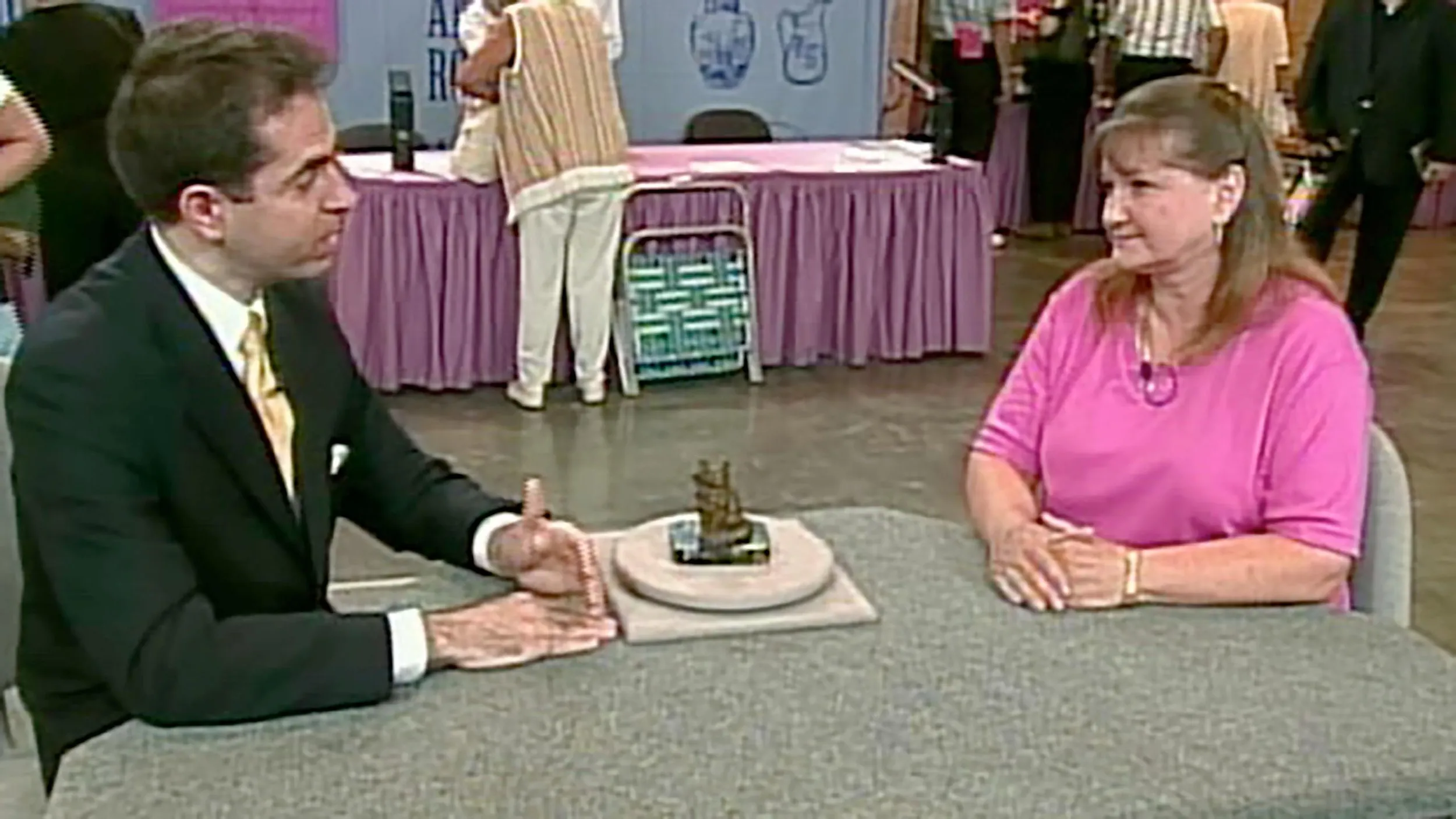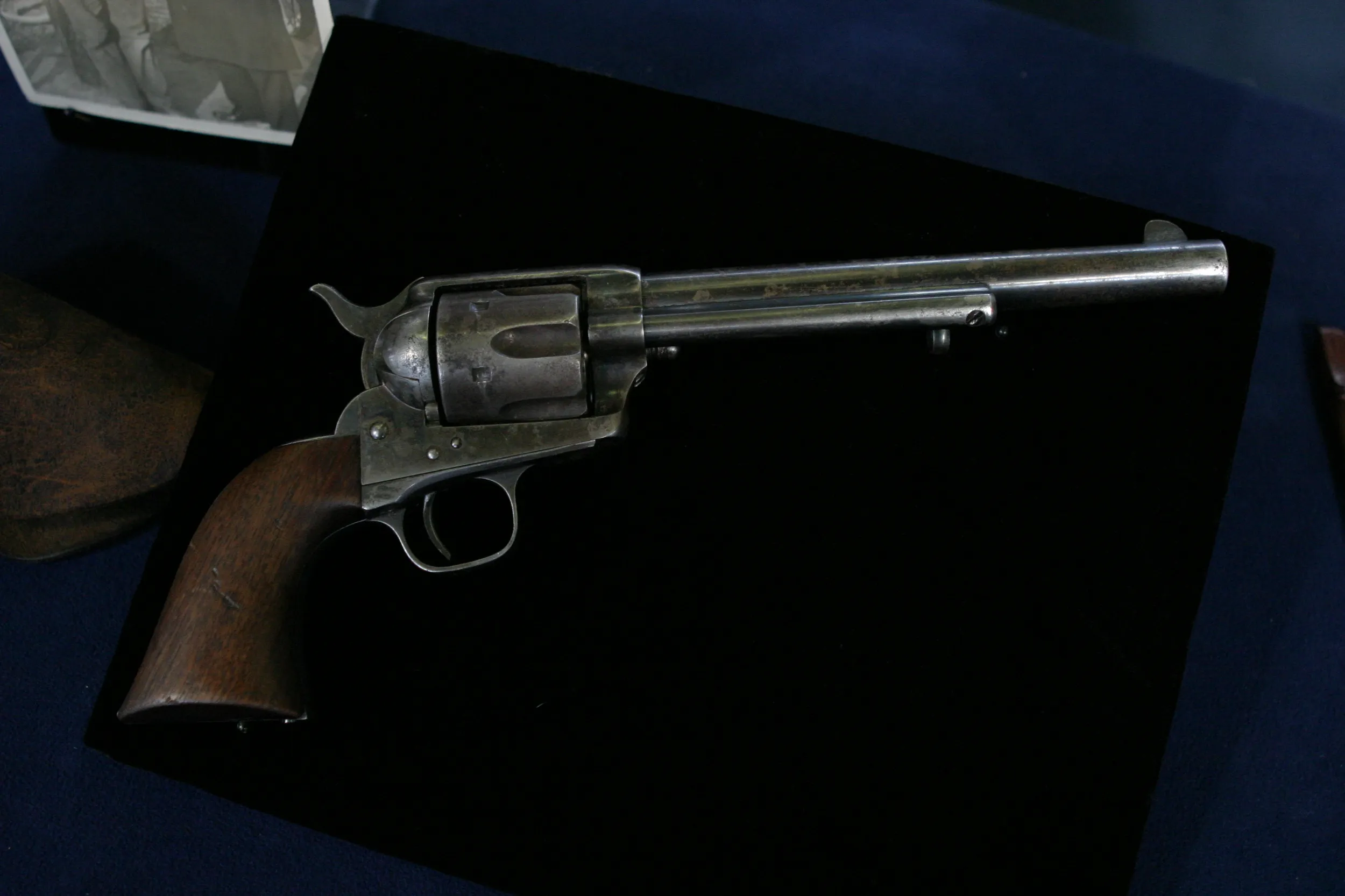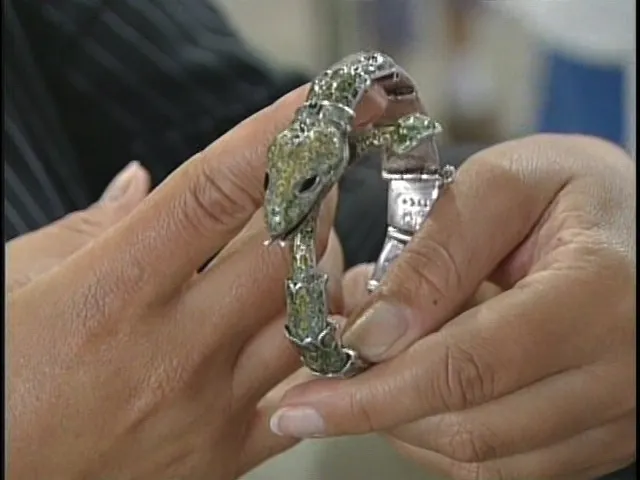APPRAISER: We were talking earlier how this came into your family, and you were telling me about the man who gave it to you.
GUEST: Right. His name was Harry Hutchison, and this was in, like, 1934. And my mother befriended him, and we had an extra room in our house, and he and his son and daughter-in-law moved in and stayed with us for a couple of years. And when he left, why, he left that with me.
APPRAISER: Do you have some idea of what this is and what it was designed to do?
GUEST: It's an escapement model for a clock. How it works, or anything of that sort, I'm not too sure, but...
APPRAISER: What fascinates me about something like this is that you've talked to people about watches all the time, and they're always just too small for you to explain what it is that makes them work. And what an escapement model is is a model of what you hear ticking inside a watch. And there's an inscription on here saying that this was made for the Hutchison School, so he must have run a school for watchmakers. My guess is that this model was made sometime in the 19th century, probably in the 1880s or so. And it's a working model that his students would've had to be able to make in order to graduate from the school.
GUEST: Yeah.
APPRAISER: And what's wonderful about it is the craftsmanship that's gone into making it. One of the things that people ask me is, "Well, can I get my watch fixed?" And I say, "Well, really, there aren't very many people left who can do that." And if you look at this, and you look at the wonderful work-- the engraving that's on it, the beautiful screws that have been put into the palettes here-- each one of these pieces is adjustable. Underneath this wheel is a small barrel that contains a spring. What is missing from this is a pin that would've fit right here. Were that pin there, we could show how this vibrated back and forth and turned. Unfortunately, we can't do that.
GUEST: Right.
APPRAISER: Even though there's a couple of pieces missing, which really are trivial to fix, something like this, in a shop, I could easily see $1,500 for it, maybe $2,000 for it. This kind of work no longer exists, and it's why mechanical watches are collected. It's a wonderful object, and it's one of the nicest things I've seen on the ROADSHOW.
GUEST: Well, thank you. I'm surprised it's worth that much money.
APPRAISER: It's a very beautiful piece of metalwork.











